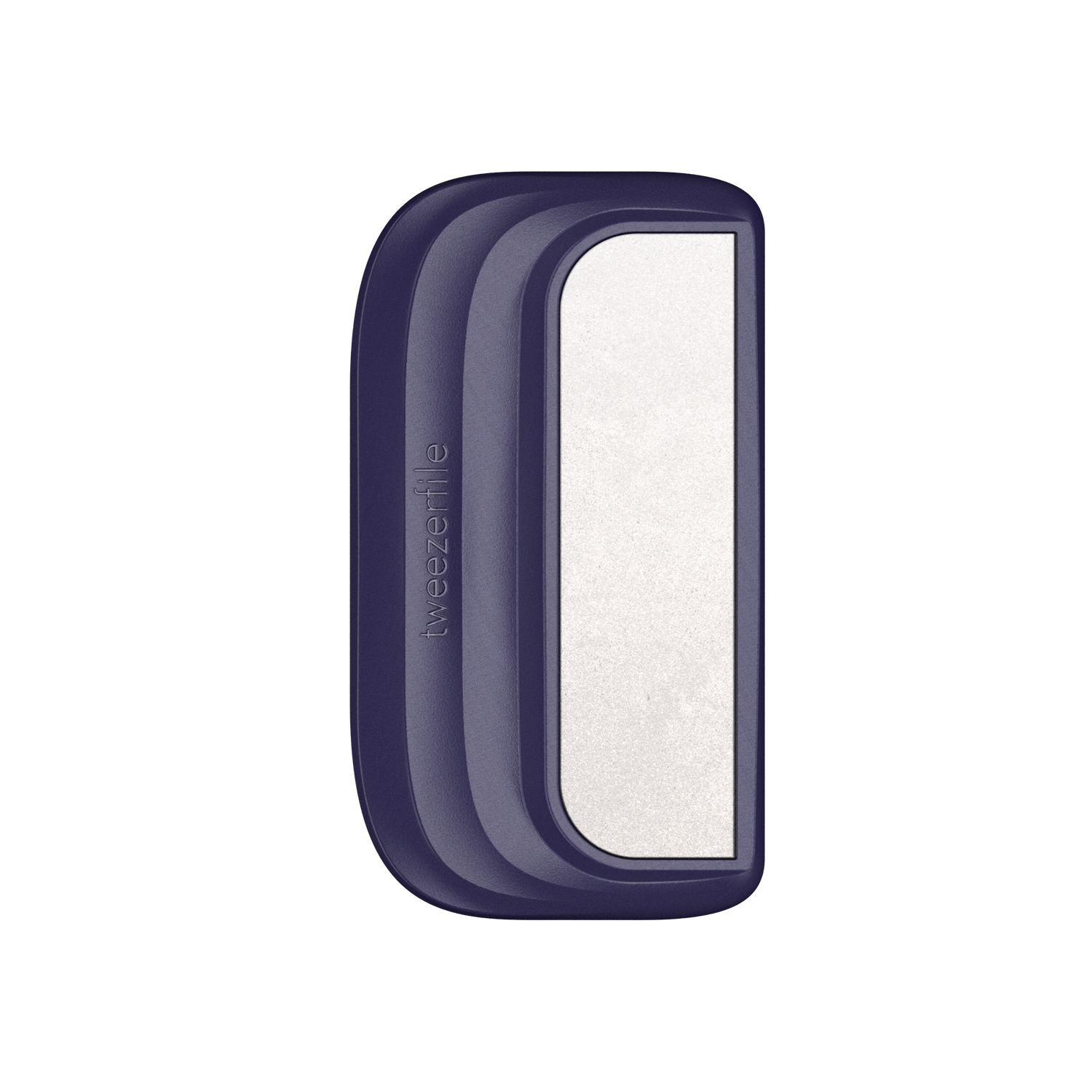
Think about the last time you tossed a pair of tweezers into the bin. Maybe they just weren’t gripping the way they used to. Maybe they got bent out of shape or simply felt… off. It’s a small act—almost automatic. But now imagine this happening millions of times every year, all around the world.
That’s what’s happening. Tweezers, those little metal grooming tools that live in our makeup bags, drawers, and bathroom cabinets, are being discarded in the tens of millions each year. And it’s not because they’re broken. It’s because they’re blunt.
Blunt Tweezers = Tossed Tweezers
Let’s break it down. Most tweezers—especially those made of stainless steel—are built to last. They aren’t designed to break or wear out quickly. But what does happen over time is dullness. The fine edges that once plucked hairs effortlessly become misaligned or lose their grip. What was once a precise tool becomes a frustrating one.
So, what do most people do? They toss them and buy a new pair.
But this “use and replace” habit comes with a hidden cost—one that affects our wallets, our environment, and our mindset around sustainability.
Let’s Talk Numbers
While exact figures are hard to track, global beauty tool markets suggest hundreds of millions of tweezers are sold each year, and a large portion of these are replacements. Many users replace tweezers every 1–2 years, often sooner, simply because they’ve gone blunt.
Let’s say just 10% of the global population owns tweezers (a very conservative estimate). That’s roughly 800 million people. If even 5% of them throw out one pair per year due to dullness, that’s 40 million tweezers ending up in landfills annually—just because they lost their edge.
That’s a lot of stainless steel.
Why It Matters: The Waste We Don’t See
On the surface, a tweezer might not seem like a major environmental concern. It’s small. It’s metal. Surely it gets recycled… right?
Unfortunately, not really. Most people throw dull tweezers in the bin, and because they’re made of mixed materials (metal tips, rubber grips, coatings, paints), they aren’t easily recycled. That means most of them end up in landfills, where they sit—more or less forever.
Multiply that by tens of millions, and suddenly, we’ve got a global problem hiding in our makeup bags.
And it’s not just about the waste. It's about manufacturing emissions, packaging, transportation, and resource extraction that goes into creating each new pair. Every replacement carries a hidden carbon footprint.
A Better Way: Sharpen, Don’t Replace
Here’s the good news: most tweezers don’t need to be thrown out. They just need a little maintenance—specifically, a good sharpening.
Enter the Tweezerfile.
Tweezerfile is a compact, easy-to-use sharpening tool that brings blunt tweezers back to life in just a few swipes. It’s the first tool of its kind designed specifically for at-home tweezer sharpening—no need to send your tools away, buy new ones, or struggle with dull tips.
Instead of throwing away a perfectly good tool, you’re extending its life—again and again.
How Tweezerfile Works
Using Tweezerfile is as simple as it is satisfying:
-
Hold your tweezers flat against the file.
-
Swipe the tweezer tips along the surface a few times on each side.
-
Test the grip. Repeat if needed.
That’s it.
In less than a minute, your tweezers can go from dull and frustrating to precise and effective. It’s the beauty equivalent of sharpening a pencil—quick, easy, and instantly gratifying.
Small Habit, Big Impact
You might wonder, “Can sharpening one pair of tweezers really make a difference?”
Let’s zoom out.
Imagine if even 1 in 10 people who regularly use tweezers chose to sharpen instead of replace. That would prevent millions of tweezers from being thrown away every year. Millions fewer items manufactured. Millions fewer items shipped. Millions fewer ending up in landfills.
In a world overwhelmed by disposable products, changing one small habit is a powerful act of resistance—and it’s something we can do without sacrificing quality or performance.

